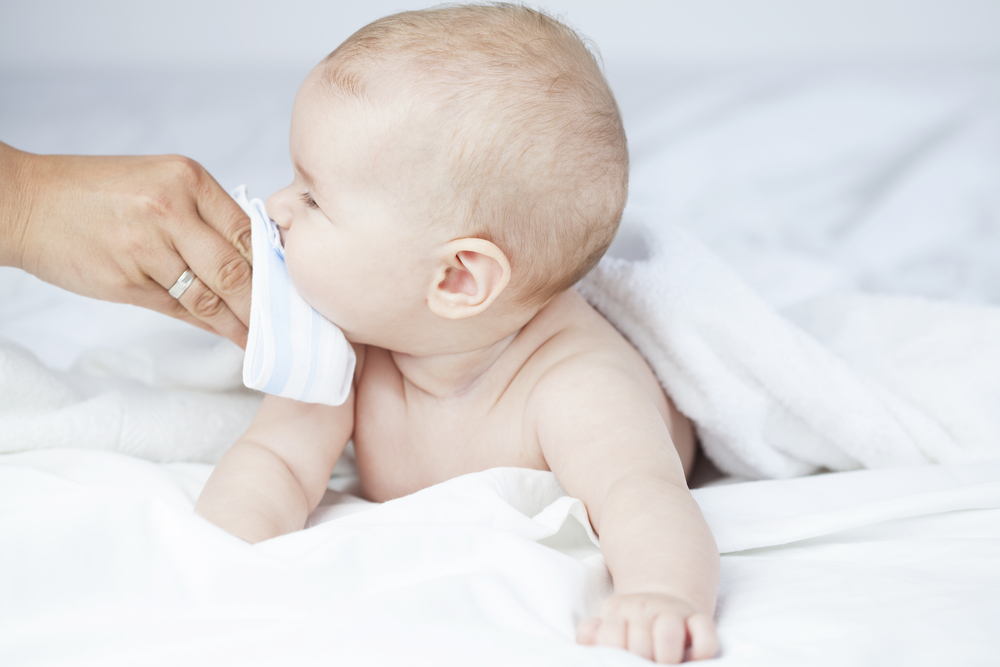Surgery in Saliva Glands After Botox Injection May Be Effective Treatment for Drooling

A minimally invasive surgical procedure in the glands that produce saliva —performed after Botox injection — is an effective treatment strategy for drooling in children who have cerebral palsy (CP) and other development disorders, a study suggests.
The study results, “Submandibular duct ligation after botulinum neurotoxin A treatment of drooling in children with cerebral palsy,” were published in Developmental Medicine & Child Neurology.
These interventions include injections of botulinum toxin A (BoNT‐A), more commonly known as Botox, “when more conservative treatments such as oral or behavioral therapy and anticholinergic medications have failed to achieve satisfactory results,” the researchers wrote. (Anticholinergic medications block the action of acetylcholine, a chemical messenger or neurotransmitter that causes muscles to contract.)
BoNT‐A reduces muscle hyperactivity and has been shown effective while being minimally invasive. However, its effects are temporary, lasting only several months. As such, repeated injections under general anesthesia are needed to maintain the therapy’s effectiveness.
Several surgical procedures have been suggested to achieve longer-lasting results to control drooling. One such procedure is bilateral submandibular duct ligation, which consists of ligating (closing off) the major secretory ducts of the submandibular glands. This procedure has advantages that include safety, effectiveness, shorter surgery times and minimal invasiveness.
“However, due to a lack of comparative studies, the relevance of bilateral submandibular duct ligation is yet to be determined among the range of surgical treatment options open to families who choose not to continue with repeated BoNT‐A injections or patients in whom BoNT‐A is not effective,” the researchers wrote.
Researchers at the Radboud University Medical Center in the Netherlands, set out to assess the effect of this surgical intervention on drooling in children treated first with BoNT‐A, and to evaluate if BoNT‐A success is a predictor for treatment success after bilateral submandibular duct ligation.
The study included a total of 29 youngsters (15 boys) ranging in age from 4 to 18, with severe drooling, who were treated with BoNT‐A injections and subsequently underwent bilateral submandibular duct ligation. Of these, 15 had a diagnosis of CP, with 12 classified as level IV and V on the Gross Motor Function Classification System. The other 14 children had non-progressive developmental disorders.
Drooling was assessed subjectively by caretakers using the Visual Analogue Scale (VAS: 0 = no drooling and 100 = severe drooling) for severity of drooling. Drooling severity also was evaluated objectively using the drooling quotient, “a method where the presence of new saliva on the lip or chin is directly observed every 15 seconds and recorded by a specialized speech and language therapist for 5 minutes.”
Measurements were taken before each intervention, at eight weeks and then again at 32 weeks. Treatment success was defined as a reduction equal or greater than 50% in one or both measurements.
The average age at the time of BoNT‐A treatment was 9.5 years, and 10 years and 11 months at the time of surgery. All children experienced submandibular swelling after surgery, which was resolved within two weeks. Adverse side effects occurred in 10.3% of children after BoNT‐A injection, and in 13.8% after bilateral submandibular duct ligation.
According to the subjective measurement, both interventions were effective. However, VAS scores were significantly lower at follow-up after bilateral submandibular duct ligation compared to BoNT‐A.
This difference could not be confirmed objectively. There was no significant difference in drooling quotient at the eight-week and 32-week follow-up, as well as no significant difference in drooling quotient scores at follow-up between BoNT‐A injection and bilateral submandibular duct ligation.
Twenty children achieved treatment success with BoNT‐A after 8 weeks and 10 children after 32 weeks. Submandibular duct ligation led to successful treatment in 24 children after eight weeks, and 15 of those continued to show continued treatment success after 32 weeks.
However, even though both VAS and drooling quotient dropped eight weeks after bilateral submandibular duct ligation, both of these scores increased significantly 32 weeks after bilateral submandibular duct ligation. “[F]uture research should focus on recurrence after bilateral submandibular duct ligation in the long‐term,” the researchers wrote.
Treatment success 32 weeks after bilateral submandibular duct ligation could not be predicted by BoNT‐A treatment success after eight weeks. Only half of the children successfully treated eight weeks after BoNT‐A were treated successfully 32 weeks after bilateral submandibular duct ligation. Moreover, a poor response to BoNT-A injection after eight or 32 weeks did not predict surgery treatment failure.
Overall “this study suggests that BoNT‐A and bilateral submandibular duct ligation are both effective in reducing drooling severity in the short term, whereas bilateral submandibular duct ligation as surgical therapy provides a greater subjective effect at both 8 (short‐term) and 32 (medium‐term) weeks compared to BoNT‐A treatment,” the researchers wrote.
They added that, although the benefits from this type of surgery were not objectively proven in these results, bilateral submandibular duct ligation should be considered when children or their parents experience poor benefits from more conservative treatments, when the burden of BoNT‐A outweighs its benefits, or when other surgical options are not possible.
“Future studies should focus on bilateral submandibular duct ligation in a larger patient population with a longer follow-up period to further define the long-term effect and externally validate predictors for treatment success or failure, thereby establishing the place of bilateral submandibular duct ligation within the current spectrum of treatment modalities for the treatment of drooling,” the researchers concluded.


